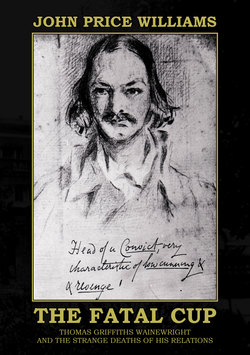Читать книгу The Fatal Cup: Thomas Griffiths Wainewright and the strange deaths of his relations - John Price Williams - Страница 55
На сайте Литреса книга снята с продажи.
Оглавлениеhe had inserted a silver tube in his throat and escaped death - hardly likely as it was an execution before a crowd estimated at 100,000 people; public executions were common in England until 1866.
Charles Lamb, writing after the execution, and quoted by Carew Hazlitt, said pointedly that it had made him cast reflecting eyes on such of his friends in a parity of situation, all exposed to a similarity of temptation. As a friend and admirer of Wainewright, perhaps he had his own suspicions.
For prodigious spending soon exhausted the illicit sums from the Bank and by 1826, Wainewright was borrowing heavily from a solicitor friend, John Atkinson, who was exacting unusual terms. To guarantee an existing loan of £3,000 and to secure a further £1,500, Wainewright agreed to pay Atkinson and several of his relatives £150 a year for their lives, and to the end of the life of the last survivor. He had to give as security books, engravings and pictures which were kept in boxes by another solicitor, Robert Shank Acheson. This was to be followed by a series of other loans, warrants of attorney and stratagems to keep the Wainewrights afloat.
There was no hope now of an artistic career; the slender talent of the precious young man who had delighted literary London ten years before had burned itself out; and in painting there was no prospect that he would have a fashionable studio in the West End to which society would flock.
It was obvious that the seven years of high living at Great Marlborough Street had to come to an end. In the autumn of 1827, the Wainewrights forsook the expensive West End to move to the
JOHN PRICE WILLIAMS
55
